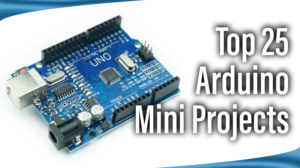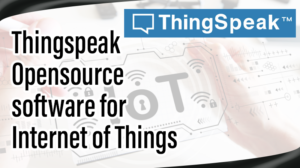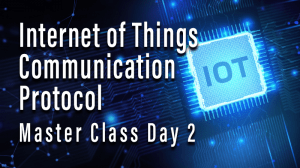
What is eye tracking?
Eye tracking is the process of measuring either the point of gaze (where one is looking) or the motion of an eye relative to the head. An eye tracker is a device for measuring eye positions and eye movement
The Benefits of eye tracking
Eye tracking is used in a wide variety of disciplines including cognitive science, psychology, human-computer interaction, marketing research and medical research. More and more, eye tracking is being used in web and software usability as well as game design. You can get a lot of data from an eye tracker and eye tracking study.
Eye tracking to understand behaviour
Traditional web usability has been focused on clicking and scrolling patterns, but eye tracking offers even richer data. After all, we look before we click. By measuring only the clicks, there’s the likelihood that you’re missing out on what people were really looking at, whether they took a specific action or not. Eye tracking is being used more and more for web and software usability specifically around usage patterns, branding, online advertising and navigation usability.
In market research, eye tracking is gaining in popularity for media advertisers. It can help identify the best print ads, online ads, commercials, etc. Advertisers can quickly figure out what’s catching people’s attention through eye tracking studies.
Over the past decade, eye tracking has gained acceptance as a direct and powerful tool for understanding human behaviour. The human brain automatically directs the eye to information it is processing, so by observing what a person is looking at, we can see what information their brain is processing. Leading consumer goods companies use eye tracking to optimize product packaging and retail shelf design. Market research companies and major advertisers use it to optimize print and TV ads. Product companies use it to optimize interaction design. Web companies use it to optimize online user experiences. And universities use it for research in psychology, neurology and medicine.
New types of medical diagnostics have also been made possible by eye tracking, as well as safety applications that monitor user attention in critical situations.
Eye tracking in computer interaction
Eye tracking enables fantastic new experiences in games and other programs, fundamentally changing the way we communicate, play and work. Tobii EyeX combines eye tracking with input from traditional controls. The core interactions – click, scroll and zoom – tap into deeply rooted behavior, making the experience easy and natural. Use your eyes to navigate and select. Then execute with a key, touchpad or voice command. This combination is highly efficient and amazingly natural. It works easily in almost any application – from high-intensity productivity applications, to games and multimedia.
Eye tracking in accessibility solutions
Where most users will benefit from an interface where eye gaze is used as a complement to other controls, a single-mode interface where eye gaze is the only control method has been designed for users with mobility impairments. To effect a click or other command, the user can choose between dwell mode, where selection is made by staring at the point of interest for a specified duration, or onscreen menus where different commands, such as left or right click, can be selected.
Eye tracking in cars and trucks
Eye tracking is also becoming part of other human-machine interfaces. In cars and trucks, it’s being integrated with advanced driver-assistance systems to improve safety and the user experience.
Eye tracking in specialized interfaces
New ways are constantly emerging to enhance performance in work environments via eye tracking. Like hands-free screen interaction in hospital environments. Industrial workstations controlled by gaze and gestures. Or process support for operators based on their attention span.
Eye tracking step by step
An eye tracker is a device that uses projection patterns and optical sensors to gather data about eye position, gaze direction or eye movements with very high accuracy. Most eye trackers are based on the fundamental principle of corneal reflection tracking
Mirametrix use infrared light, which is reflected from the eye and sensed by a camera. The eye tracker uses corneal reflection and the center of pupil as features to track over time. This tells the eye tracker where the eye is looking and tracks how it moves (and how the gaze moves). The advantage of this method is that it’s non-invaside and no device is connected to the subject’s body (unlike a head mounted system for example.)
Eye movement is a combination of fixations and saccades. A fixation is when the eye gaze pauses in a certain spot. A saccade is when it moves to another position. The resulting series of fixations and saccades is called a scanpath. In eye tracking, the fixation is the most important point of data; researchers want to understand where someone is focusing and often for how long.
What can be tracked?
- Gaze direction and gaze point – used in interaction with computers and other interfaces, and in behavioral research/human response testing to better understand what attracts people’s attention.
- Eye-presence detection – the eye-tracking system must first find the eyes, so it is the most fundamental part of eye tracking. It is also used in specific features such as power saving by dimming the screen when eyes are not detected.
- Eye position – the ability to calculate the position of the eyes in real time makes the eye tracking system accurate and precise while allowing the user to move freely. Eye position is also used in gaming and auto stereoscopic 3D-display systems.
- User identification – the eye tracking system can be used as a multimodal biometrics sensor, such as for logging on to a computer or for car-driver identification. It can combine face identification with physiological eye features and eye movement patterns.
- Eyelid closure – is used to monitor the user’s sleepiness, for instance in advanced driver assistance or operator safety solutions.
- Eye movement and patterns – are studied to understand human behavior and to assess and diagnose injuries or diseases. You can, for example, perform hearing tests on infants or identify markers of diseases such as Alzheimer’s or autism at a very early stage. The study of microsaccades is also central in neurological research.
- Pupil size and pupil dilation – pupil dilation is an indicator of excitement. In combination with eye movement patterns and facial expressions, it can be used to derive emotional reactions, for instance in creating innovative user experiences. Pupil dilation can also serve as a marker of impairment, such as concussion, or drug or alcohol influence.
Eye tracking glossary
- Eye tracker – A device that incorporates illumination, sensors and processing to track eye movements and gaze point. The use of near-infrared light allows for accurate, continuous tracking regardless of surrounding light conditions. This technology is often referred to as pupil center corneal reflection eye tracking.
- Remote eye tracker – A device that does eye tracking at a distance from the user, most commonly attached to, or integrated into, a display device of some sort.
- Mobile eye tracker – A wearable eye tracker, often integrated into the frame of a pair of glasses. Allows you to track where a person is looking while moving around freely.
- Head tracker – A system that measures the location and/or posture of a person’s head. This is sometimes confused with eye-tracking technology.
- Webcam eye tracking – Uses standard web cameras, without use of active projection system, to determine eye position and eye gaze. Not nearly as precise and reliable as standard eye tracking, but provides a cost-effective solution for roughly assessing where groups of people are looking, for instance in media content. See for instance www.sticky.ad.
- Eye control/gaze control – Hands-free control of electronic devices, similar to the ways users operate a mouse. The eyes are used to navigate, but also to select on screen. Eye control is used by people who have speech impairments or physical disabilities, by operators working in heavy industry or using industrial vehicles, and in operating rooms.
- Dwell click – A selection mechanism in systems using eye control. The user clicks by staring at the point of interest for a specified duration (i.e. 500ms, 900ms).
- Calibration – Required to optimize the eye tracker. By looking at a couple of points for a few seconds, the eye tracker can identify individual eye characteristics. State-of-the-art systems such as Tobii’s require calibration only once.
- Tracking robustness – The system’s ability to continuously track eyes and gaze on all users in varying environments. All users means that the eye tracker works regardless of eye color, eyewear, contact lenses, occluding eyelids and eyelashes, etc. Varying environments mean that it works with consistent accuracy regardless of ambient light conditions.
- Consistent accuracy – Accuracy is a common eye-tracking measure that defines the system’s capacity to measure the point of gaze. Consistent accuracy means that accuracy is maintained for all users, independent of head movements, changing light conditions, without need for constant recalibration. It also means good accuracy across the entire screen.
- Head movement allowance – The user can move freely in front of the system without loss of tracking. Good head movement allowance, and allowance for fast movements, makes sure the user can move normally in front of the screen. This is a central requirement for all eye tracking systems regardless of usage.
Eye Tracking Research fields:
- Abnormal psychology
- Applied research
- Cognitive neuroscience
- Cognitive psychology
- Comparative cognition
- Developmental psychology
- Education
- Eye tracking technology and methodology
- Gaze interaction
- Health and medical research
- Linguistics and reading
- Marketing and consumer research
- Opthalmology and visual perception
- Social psychology
- Software development
- User experience research
- Other



